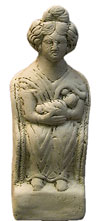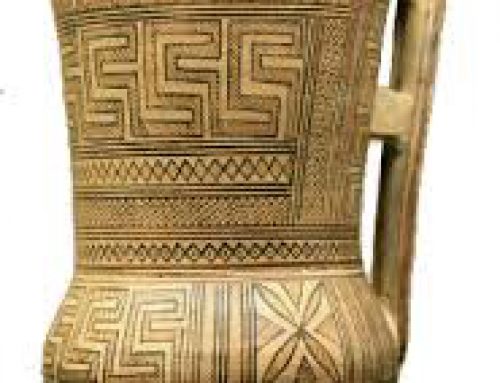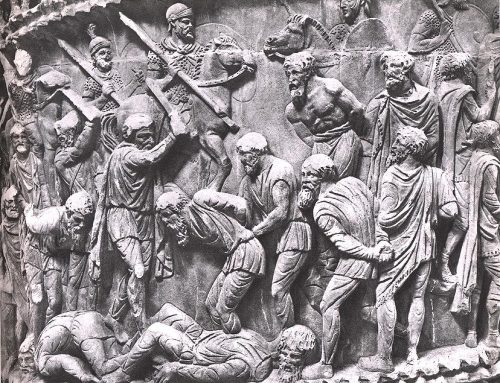
Iron Age art: Villanovan cremation urn with helmet on top (ca. 900 BC)
Is it okay to represent people?
In the beginning of the Iron Age, about 1000 BC, people in Europe were still reluctant to represent the human form. The Villanovan cremation urns are just clay pots made to hold people’s ashes, but they wear helmets as if they were people – sometimes real helmets, sometimes clay ones.
Who were the Villanovans?
Bronze Age art in Europe
Iron Age European buildings
The Iron Age in Europe
All our Northern Europe articles

Bronze deer figurine (Bulgaria, ca. 1000 BC) Now in Sofia, Bulgaria
Bronze animal figurines
Meanwhile, in Eastern Europe, people were making small horse and deer figurines. These were not clay, but bronze. They’re very much like the bronze figurines being made at the same time further east in Central Asia, and further south in Greece. Their long, thin bodies and small size are both the same as the Central Asian and Greek figurines. It’s likely that they were offerings that people bought to leave at temples as a sacrifice to their gods.
Dark Age Greek sculpture
Central Asian art
Religion of Northern Europe

Etruscan cremation urn (ca. 600 BC)
Etruscan representations of humans
By the time the Etruscans are making cremation urns, though, four hundred years later, they’re definitely representing people. This Etruscan urn, made of baked clay, shows a man sitting (or standing?) in a chair with his hands folded over his stomach.
More Etruscan art
Etruscan buildings
What is cremation?
Who were the Etruscans?

This is a pot from Gaul before the Romans conquered it.
Inspired by Greek art
About this time, the Etruscans started to trade more and more with Greek and Carthaginian trading ships that sailed to Italy to sell them wine and perfumes and glass beads. The Etruscans were inspired by Greek art and started to create full-sized clay statues. You can read more about Etruscan art in this article.

Iron Age art: Clay statuette of a woman nursing a baby. Bavaria, 100s AD (now in Munich)
Roman art moves north
Then starting in the 100s BC, Roman soldiers and traders carried the idea of sculptures of people and animals to the edges of the Roman Empire.
Roman art
All our ancient Rome articles
There are many carvings, paintings, mosaic floors, and statuettes all over the European parts of the Roman Empire. This small clay statue of a woman nursing her baby was probably made just like the earlier deer, to leave at a religious shrine as a sacrifice to the god, or as a thank-you offering to the gods for a safe and successful childbirth.
But outside the borders of the Roman empire, in Central Europe, representations of people are still rare and abstract well into the Middle Ages.




